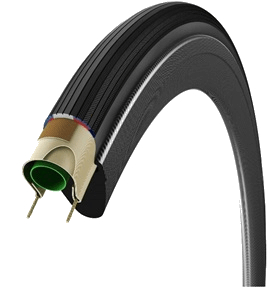Wire drawing is a metalworking process used to reduce the cross-section of a wire by pulling the wire through a single, or series of, drawing die. There are many applications for wire drawing, including electrical wiring, cables, tension-loaded structural components, springs, paper clips, spokes for wheels, and stringed musical instruments.
In drawing, the cross section of a long rod or wire is reduced or changed by pulling (hence
the term drawing) it through a die called a draw die.
difference between drawing and extrusion
the difference between
drawing and extrusion is that in extrusion the material is pushed through a die, whereas in
drawing it is pulled through it. The major processing variables in a drawing are similar to those in extrusion that is, reduction
in cross-sectional area, die angle, friction along the die-workpiece interface, and drawing
speed.


Although the presence of tensile stresses is obvious in drawing, compression also plays a significant role because the metal is squeezed down as it passes through the die opening. For this reason, the deformation that occurs in drawing is sometimes referred to as indirect compression. Drawing is a term also used in sheet metal working. The term wire and bar drawing is used to distinguish the drawing process discussed here from the sheet metal process of the same name. Rod and wire products cover a very wide range of applications, including shafts for power transmission, machine and structural components, blanks for bolts and rivets, electrical wiring, cables and ….
The basic difference between bar drawing and wire drawing is the stock size that is processed. Bar drawing is the term used for large diameter bar and rod stock, while wire drawing applies to small diameter stock. Wire sizes down to 0.03 mm (0.001 in) are possible in wire drawing.
Bar drawing is generally accomplished as a single-draft operation—the stock is pulled through one die opening. Because the beginning stock has a large diameter, it is in the form of a straight cylindrical piece rather than coiled. This limits the length of the work that can be drawn. By contrast, the wire is drawn from coils consisting of several hundred (or even several thousand) feet of wire and is passed through a series of draw dies.
Drawing process
After removal of the iron oxide layer, the wire is lubricated. A powered capstan draws it through a die, reducing the diameter. Further eduction can take place using extra dies. The drawn wire is finally wound on a spool.
This transformation elongates the wire. One meter of 5.5 mm wire rod can be drawn to 30 meters with 1 mm diameter, or 484 meters with 0.25 mm diameter. The process increases the tensile and yield strength while reducing ductility.
Bead wire
STC’s bead wire high carbon steel wire available in a range of wire diameters , tensile strengths and shapes. Depending on offer we can provide several types of bead wire.
A bead wire is a major component used for reinforcing radial tires, while protecting the carcass plies from rubbing against the rim.
Beads are bands of high tensile strength steel wire encased in a rubber compound. Bead wire is coated with special alloys of bronze (copper and tin) or brass (copper and zinc). Coatings protect the steel from corrosion. Copper in the alloy and sulphur in the rubber cross-link to produce copper sulphide, which improves bonding of the bead to the rubber. Beads are inflexible and inelastic, and provide the strength to mechanically fit the tire to the wheel. Bead rubber includes additives to maximize strength and toughness.
Here you see the manufacture process of STC’s bead wire:
